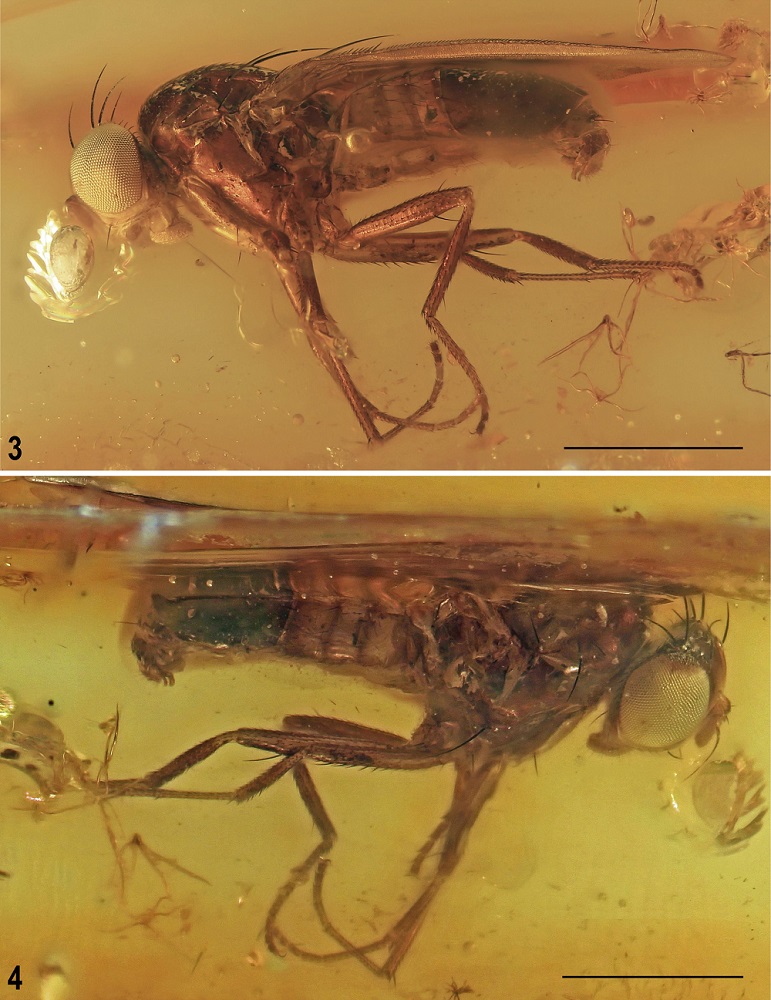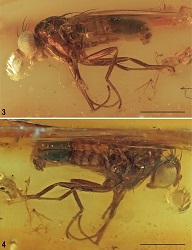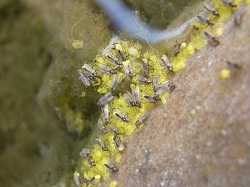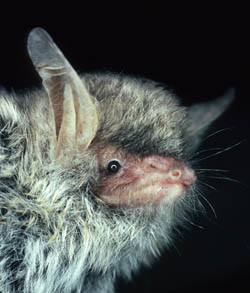An international scientific team has described from a Baltic amber fossil (48-34 million years old) a representative of an entirely new, previously unknown family of insects of the large group called Acalyptrata, which contains many of the critically important pollinators and scavengers in the modern system. This rare find is important for better understanding of the evolutionary history of this group and its functions within ecosystems.
Identifying this new species was not an easy task. The team started by examining it in detail under the light of the microscope. Later, they used macro photography to observe the details with better definition. However, this was not enough to identify and classify the species. "The amber obscured many important characters of the specimen preserved within, which are inaccessible with traditional microscopy", explains Viktor Baranov, co-author of the study and a researcher at the Doñana Biological Station – CSIC. The team had to resort to the cutting edge fossils visualisation techniques, such a synchrotron radiation based X-ray micro tomography, that allowed them to build a 3D picture of the insect fossil by using highly brilliant X-rays. "This technology is similar to how medical professionals using CT-tomography to diagnose illness", clarifies the researcher.
In the images, the specimen showed a very peculiar combination of morphological characters with no apparent signs of relationship to any of the other families of the Acalyptrata group. "This meant that it was tentatively a new family never described before. It is an important discovery, but also an exceedingly rare one, despite the huge diversity of insects we find in the world", points Baranov.
The type genus of the new family Christelenkidae was named by J. Rohácek Christelenka (Christel + Lenka) after prominent citizen scientist and amber collector from Germany, Mrs. Christel Hoffeins, in recognition of her immense contribution to paleontological science and also after Mrs. Lenka Rohácekvá, the wife of the first author for her lifelong support with his research in dipterology. This particular new species was named Christelenka multiplex, because of this peculiar variety of characteristics that make it unique and for which is considered within a separate lineage of Acapytratae, although the team does not exclude potential relationships with other families of Opomyzoidea and Ephydroidea, which are needed to be studied in the future.
The research of this previously unknown group of flies also contributed to the knowledge of the biodiversity of the entomofauna in the Tertiary "Baltic Amber Forest". "According to current findings, it appears that the diversity of the Acalyptratae fauna was very high in this ecosystem, probably greater than in the whole of contemporary Europe", emphasized Dr. J. Rohácek. It was caused by the precipitous radiation of higher Diptera, which was probably related to the rapid development of vegetation in the early Eocene period during the so-called climatic maximum (about 49 million years ago), which occurred 15-20 million years after the catastrophic extinction of fauna and flora on the Cretaceous-Tertiary boundary (the so-called K-T extinction event, about 66 million years ago).
The Acalyptrata group is very large and diverse and contains important pollinators with crucial ecosystem functions. However, their fossils are extremely rare, thus there is a large gap about their early evolutionary history. "Discovery of this fly will facilitate new research on this group, allowing us to better understand how they become so important in the modern ecosystems", concludes Dr. Baranov. "Such understanding is particularly important now, due to ongoing biodiversity crisis and resulting decline of natural pollinators".
Microtomograph image of Christelenka multiplex. Photo: Viktor Baranov
Reference:
Jindrich Rohá?ek, Jörg U. Hammel, Viktor Baranov. Christelenkidae, a new extinct family based on a new taxon from Eocene Baltic amber (Diptera: Acalyptratae), with X-ray synchrotron microtomography imaging of its structures. Arthropod Systematics & Phylogeny. https://doi.org/10.3897/asp.81.e101441
Contact:
outreach[at]ebd.csic.es
https://doi.org/10.3897/asp.81.e101441 Contacto:



 New family of insects discovered from an amber fossil
New family of insects discovered from an amber fossil


 New Patagonian species of Liolaemus
New Patagonian species of Liolaemus